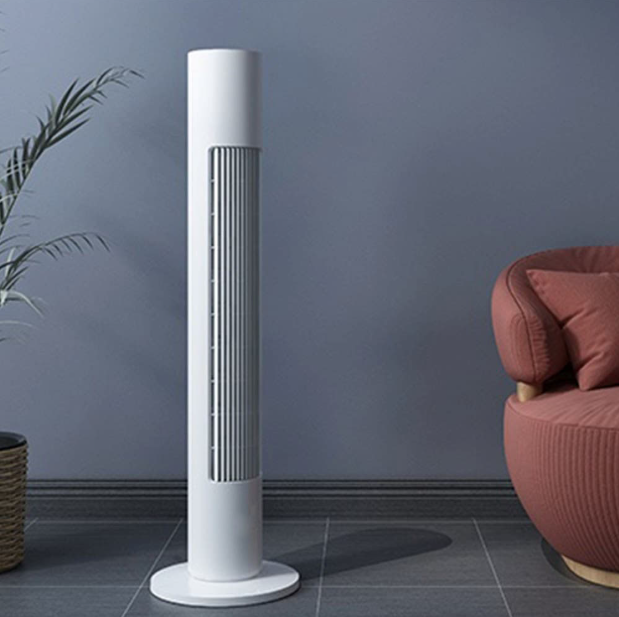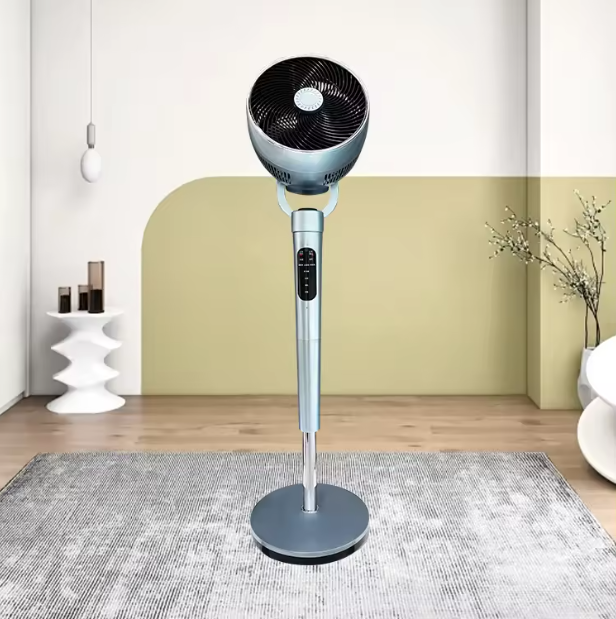If your electric fan isn’t turning on, changing speeds, or responding properly, you might be wondering how to fix an electric fan switch. A faulty switch is a common issue that can disrupt your fan’s performance, but the good news is that it’s often repairable with some basic tools and know-how. In this comprehensive guide, we’ll walk you through the process of diagnosing and fixing an electric fan switch, while also covering electric fan safety, electric fan troubleshooting, and electric fan maintenance to keep your fan running smoothly. Whether you’re using a portable electric fan or a larger model, these steps will help you restore your electric fan to full functionality.
Why Your Electric Fan Switch Might Be Faulty
The switch on an electric fan controls power and speed settings, and over time, it can malfunction due to wear, dust buildup, or electrical issues. Common signs of a faulty switch include:
- The fan won’t turn on or off.
- The fan is stuck on one speed or won’t change speeds.
- You hear clicking but no response from the fan.
- The switch feels loose or unresponsive.
Before diving into repairs, it’s important to approach the task with caution and prioritize electric fan safety. Let’s explore how to diagnose and fix the switch effectively.
Tools and Materials You’ll Need
To fix an electric fan switch, gather these tools and materials:
- Screwdriver (Phillips or flathead, depending on your fan).
- Replacement switch (if needed, ensure it matches your fan’s model).
- Multimeter (for testing electrical continuity).
- Small brush or compressed air (for cleaning).
- Electrical tape (for securing wires).
- Lubricant (optional, for mechanical switches).
Having these tools ready will make the repair process smoother and safer.
Step-by-Step Guide to Fixing an Electric Fan Switch
Follow these steps to diagnose and repair your electric fan switch. Always prioritize electric fan safety by unplugging the fan before starting any repairs.
1. Unplug the Fan and Ensure Safety
Before working on your fan, unplug it from the power outlet to avoid electric shock. This is a critical electric fan safety step. Double-check that the fan is completely disconnected and place it on a stable, well-lit workspace.
2. Perform Electric Fan Troubleshooting
Before assuming the switch is the problem, confirm it’s the cause of the issue. Here’s how to troubleshoot:
- Test the Power Source: Plug another device into the same outlet to ensure it’s working.
- Check the Cord: Inspect the power cord for fraying or damage. A damaged cord could mimic switch issues.
- Try Different Settings: Test all speed settings and the on/off function to identify if the problem is specific to the switch.
- Listen for Sounds: If you hear clicking when turning the switch but the fan doesn’t respond, the switch or its connections may be faulty.
If troubleshooting points to the switch, proceed with the repair. For more troubleshooting tips, check out this cooling guide.
3. Access the Switch
To reach the switch, you’ll need to open the fan’s housing. Follow these steps:
- Use a screwdriver to remove the screws securing the fan’s front grille or back panel, depending on your fan’s design.
- Carefully lift off the grille or panel to expose the internal components, including the switch, which is usually located near the control knob or buttons.
- Take note of how the components are assembled to make reassembly easier.
Handle the fan’s parts gently to avoid damaging the blades or motor during this process.

4. Inspect the Switch and Wiring
Once you’ve accessed the switch, inspect it for visible issues:
- Look for Loose Connections: Check if the wires connected to the switch are loose or disconnected. Gently tug on each wire to ensure it’s secure.
- Check for Dust or Debris: Dust buildup can interfere with the switch’s operation. Use a small brush or compressed air to clean the switch and surrounding area.
- Inspect for Damage: Look for signs of burning, melting, or corrosion on the switch or wires, which indicate electrical issues.
If the switch appears dirty but intact, cleaning it may resolve the issue. If you see damage, you’ll likely need to replace the switch.
5. Test the Switch with a Multimeter
To confirm whether the switch is faulty, use a multimeter to test its continuity:
- Set the multimeter to the continuity or resistance setting.
- Touch the multimeter probes to the switch’s terminals, testing each speed setting and the on/off position.
- If the multimeter shows no continuity (or no reading) in any position, the switch is faulty and needs replacement.
If you’re unsure how to use a multimeter, consult your fan’s manual or seek professional help to avoid damaging the switch further.
6. Clean or Lubricate the Switch (If Applicable)
If the switch is dirty or sticky but not damaged, cleaning or lubricating it may restore functionality:
- Use a small brush or compressed air to remove dust from the switch mechanism.
- If the switch is mechanical (e.g., a rotary or slide switch), apply a small amount of electrical contact cleaner or lubricant to improve movement.
- Test the switch after cleaning to see if it responds properly.
Be cautious not to over-lubricate, as excess lubricant can attract dust and cause future issues.
7. Replace the Switch (If Necessary)
If the switch is damaged or doesn’t work after cleaning, you’ll need to replace it. Here’s how:
- Purchase a replacement switch compatible with your fan’s make and model. Check your fan’s manual or contact the manufacturer for specifications.
- Take a photo of the wiring before disconnecting to ensure correct reattachment.
- Disconnect the wires from the old switch, noting their positions (e.g., which wire connects to which terminal).
- Connect the wires to the new switch in the same configuration, securing them with electrical tape if needed.
- Secure the new switch in place, ensuring it’s properly aligned with the fan’s control panel.
After replacing the switch, reassemble the fan and test it to confirm it works correctly.
8. Reassemble and Test the Fan
Once the switch is cleaned or replaced, reassemble the fan:
- Reattach the grille or panel, securing all screws tightly.
- Plug the fan into a power outlet and test all speed settings and the on/off function.
- Listen for any unusual noises or vibrations, which could indicate improper reassembly.
If the fan works smoothly, you’ve successfully fixed the switch! If not, revisit the wiring or consider consulting a professional.
Electric Fan Maintenance to Prevent Switch Issues
Regular electric fan maintenance can prevent switch problems and keep your fan running smoothly. Here are some tips to maintain your fan’s switch and overall performance:
- Keep the Fan Clean: Dust can accumulate inside the switch, causing it to malfunction. Regular electric fan cleaning prevents this. Clean the fan every 3–6 months by following how to clean an electric fan guidelines: unplug the fan, remove the grille, and clean the blades and housing with a soft brush or cloth.
- Avoid Overuse: Constantly switching speeds or turning the fan on and off can wear out the switch. Use the fan at a consistent speed when possible.
- Store Properly: When not in use, store your fan in a dry, dust-free environment to protect the switch and other components.
- Check Wiring Periodically: Inspect the wiring and switch for signs of wear or looseness during routine maintenance.
By incorporating these electric fan maintenance practices, you can reduce the likelihood of switch issues and extend your fan’s lifespan. For more maintenance tips, visit electricfanatic.com.

Electric Fan Safety Tips for Repairs
When fixing an electric fan switch, always prioritize electric fan safety to avoid injury or damage:
- Unplug the Fan: Never work on a fan that’s plugged in to avoid electric shock.
- Use Insulated Tools: Use screwdrivers with insulated handles to reduce the risk of electrical accidents.
- Work in a Dry Area: Avoid repairing the fan in damp or wet environments to prevent electrical hazards.
- Handle Wires Carefully: Avoid pulling or twisting wires, as this can cause further damage or create loose connections.
- Know Your Limits: If you’re unsure about electrical repairs, consult a professional to avoid damaging the fan or risking injury.
When to Replace Your Fan Instead of Fixing the Switch
In some cases, fixing the switch may not be worth the effort, especially if the fan is old or has multiple issues. Consider replacing your fan if:
- The switch is damaged beyond repair, and a compatible replacement is hard to find.
- The fan has other problems, such as a failing motor or damaged blades.
- The cost of repairs exceeds the price of a new, more efficient fan.
If you decide to replace your fan, check out this best electric fan guide for recommendations on reliable, high-performance models.
Electric Fan Troubleshooting for Persistent Issues
If fixing the switch doesn’t resolve the problem, other issues might be affecting your fan. Try these electric fan troubleshooting steps:
- Check the Motor: A failing motor can mimic switch issues. Listen for grinding or humming sounds, which may indicate motor problems.
- Inspect the Capacitor: Some fans have a capacitor that controls speed settings. A faulty capacitor can cause the fan to malfunction.
- Test the Fuse: If your fan has an internal fuse, check if it’s blown and replace it if necessary.
If troubleshooting doesn’t resolve the issue, consult a professional or consider replacing the fan.
Conclusion: Restore Your Electric Fan with Confidence
Learning how to fix an electric fan switch can save you time and money while keeping your fan in top shape. By following these steps—diagnosing the issue, cleaning or replacing the switch, and prioritizing electric fan safety—you can restore your fan’s functionality and enjoy cool, reliable airflow. Regular electric fan maintenance and proper electric fan setup will help prevent future switch issues and keep your portable electric fan or larger model running smoothly.
For more tips on repairing, maintaining, or choosing a new fan, visit electricfanatic.com. With the right care and attention, your electric fan will provide safe, efficient cooling for years to come!